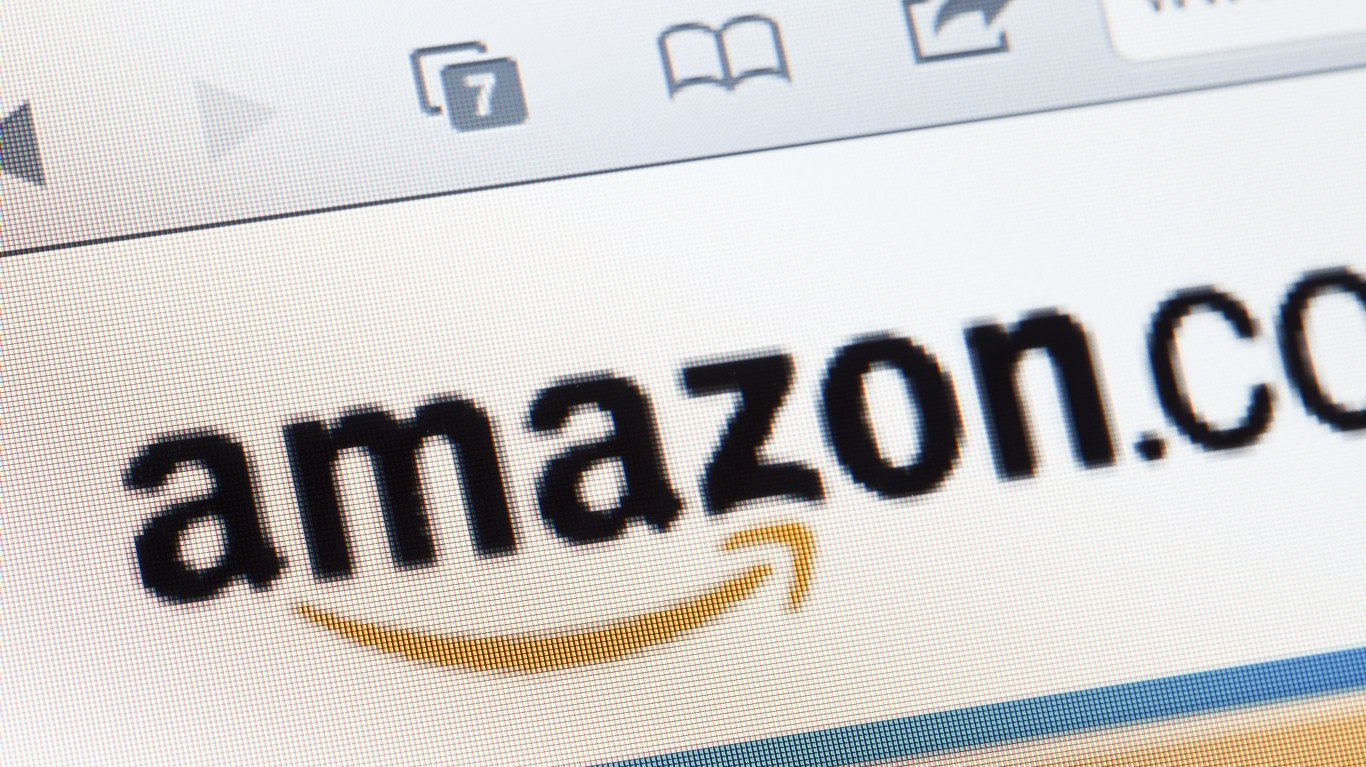

While Amazon.com Inc. (NASDAQ: AMZN) trails Alphabet Inc.’s (NASDAQ: GOOGL) Google by a factor of nearly six in search advertising, Amazon’s share is expected to rise by three percentage points over the next two years, from 12.9% to 15.9%. That growth is forecast to come primarily at the expense of Google, which is expected to see a decline from 73.1% of the 2019 search market to 70.5% by 2021.
A new report from digital marketing research firm eMarketer estimates the search advertising market to reach some $55.17 billion this year, of which Google is expected to grab about $40.33 billion to Amazon’s $7.09 billion. Of the top five companies ranked by search revenues, only Amazon is projected to increase its share of the market over the next several years.
eMarketer principal analyst Nicole Perrin explained: “Amazon’s ad business has attracted massive increases in spending because advertisers can reach consumers during product queries, a time when they’re ready to buy. Amazon has also rolled out better measurement and targeting tools, making it even more attractive for advertisers.”
The rest of the current top five search companies are Microsoft Corp. (NASDAQ: MSFT), Verizon Communications Inc. (NYSE: VZ) and Yelp Inc. (NYSE: YELP), with 6.5%, 2.0% and 1.8% of the search market, respectively. They are also projected to lose share to Walmart Inc. (NYSE: WMT), Target Corp. (NYSE: TGT), eBay Inc. (NASDAQ: EBAY) and Pinterest Inc. (NYSE: PINS).
When a customer searches for a product on Amazon, vendors can boost their place in the search results by “sponsoring” keyword-targeted results promoting their products. The beauty of Amazon’s ad business is that about half of customers don’t even know that the top search results are paid advertisements.
Amazon also sells display and video ads. In May, the e-commerce giant acquired ad service Sizmek, which is expected to make the company’s search advertising even more attractive to vendors. Sizmek has two parts: an ad server that makes it easier for advertisers to place ads and to track their effectiveness and a “dynamic creative optimization” piece that will allow advertisers to tailor ads for specific attributes, like location.
If that all sounds Google-like, that’s no accident. That is essentially what the search engine behemoth does and, by mimicking Google’s formula, Amazon is following a proven path to success. The Amazon advantage is that customers are there either to comparison shop or to buy something. That’s not always the case with Google.
Social media sites like Facebook Inc. (NASDAQ: FB) and Twitter Inc. (NYSE: TWTR) may be even more disadvantaged because their users are not there to buy something. Will Tjernlund, chief marketing officer at Goat Consulting, told CNBC in July that conversion rates (ad viewers who actually buy something at the time) are as high as 20% to 30% on Amazon, compared to just 1% to 10% on Facebook.
In the first half of this year, Amazon has reported sales in its “other” group of $5.72 billion, up from $4.23 billion in the same period last year. That group primarily represents the company’s advertising business. Last March, eMarketer forecast that Amazon’s share of the total U.S. digital advertising market would rise by more than 50% year over year to around 8.8% of the digital market, or $11.4 billion. That estimate appears to be right on track.
Later this month Amazon will report third-quarter results that analysts estimate will come in at around $68.8 billion in revenues and $4.57 in earnings per share. That’s a jump of 21.6% in sales but a decline of more than 20% in earnings.
Also note that Amazon is one of the most valuable brands in the world and it owns one of America’s most popular grocery stores.
The company’s stock traded up about 0.6% Tuesday morning to $1,747.03, in a 52-week range of $1,307.00 to $2,035.80. The 12-month consensus price target on the stock is $2,301.30.
Thank you for reading! Have some feedback for us?
Contact the 24/7 Wall St. editorial team.
 24/7 Wall St.
24/7 Wall St.


